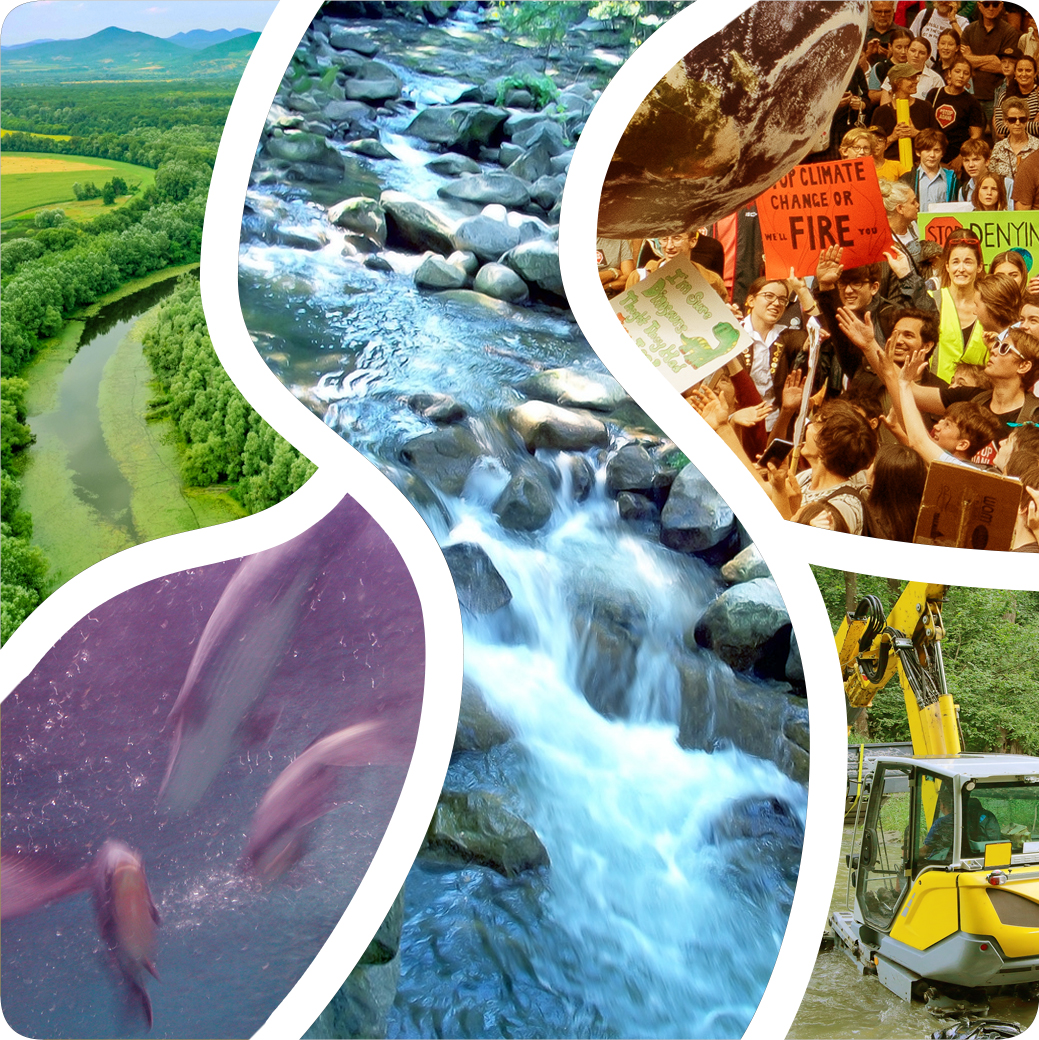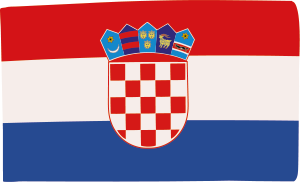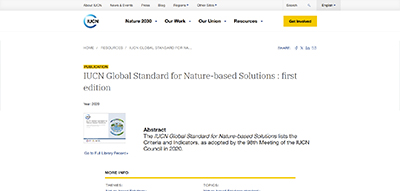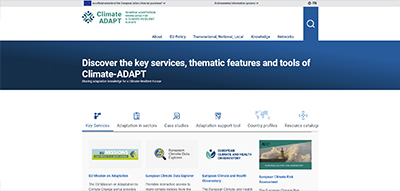Petra Remeta
Consultant - environment, climate, and sustainability Trinomics B.V.
Restoration Engineers / Consultants / Practitioners

My Projects
 Wetlands and Blue Carbon. Comprehensively lay out the EU’s GHG inventorying process on wetlands, map and identify patterns of and drivers behind land-use changes in these habitats and describe the state-of-play on measures and initiatives enhancing carbon sequestration via blue carbon, to contribute to understanding the full potential of Blue Carbon at the EU level.
Wetlands and Blue Carbon. Comprehensively lay out the EU’s GHG inventorying process on wetlands, map and identify patterns of and drivers behind land-use changes in these habitats and describe the state-of-play on measures and initiatives enhancing carbon sequestration via blue carbon, to contribute to understanding the full potential of Blue Carbon at the EU level.
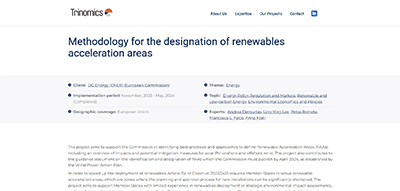 Methodology for identifying renewable energy acceleration areas. Design a comprehensive framework to guide identification of areas for deployment of solar and wind energy, assessment of environmental impacts and identification of mitigation measures, with a view to avoiding and reducing impacts.
Methodology for identifying renewable energy acceleration areas. Design a comprehensive framework to guide identification of areas for deployment of solar and wind energy, assessment of environmental impacts and identification of mitigation measures, with a view to avoiding and reducing impacts.
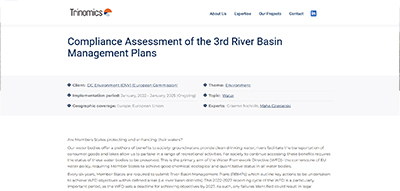 Compliance assessment of the 3rd River Basin Management Plans (RBMP) under the WFD. Support the assessment of the quality of RBMPs for the period 2021 – 2027 compared to the Water Framework Directive expectations and the status / progress reports by each Member State in the previous planning cycle.
Compliance assessment of the 3rd River Basin Management Plans (RBMP) under the WFD. Support the assessment of the quality of RBMPs for the period 2021 – 2027 compared to the Water Framework Directive expectations and the status / progress reports by each Member State in the previous planning cycle.
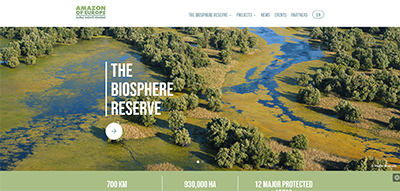 Reconnecting riverine habitats across a five-country UNESCO Biosphere Reserve. Restore a large multi-functional landscape that benefits nature, climate resilience and people, and establish a restoration task force that brings together key sectors (nature, agriculture, forestry and water) to catalyse recovery across the wider landscape and to promote the Biosphere reserve as a replicable model of inclusive restoration and sustainable development.
Reconnecting riverine habitats across a five-country UNESCO Biosphere Reserve. Restore a large multi-functional landscape that benefits nature, climate resilience and people, and establish a restoration task force that brings together key sectors (nature, agriculture, forestry and water) to catalyse recovery across the wider landscape and to promote the Biosphere reserve as a replicable model of inclusive restoration and sustainable development.
Identification of indicators to measure benefits of river restoration. Develop key parameters to assess and monitor economic, ecologic and societal benefits that river restoration provides.
Keeping Balkan rivers free flowing. Mainstream river protection and nature conservation in the region through awareness raising and advocacy campaigns for sustainable hydropower development and integrated water resources management, development of policy recommendations to create enabling legislative frameworks, and engage with stakeholders to facilitate dialogue and transparency of decision making.
- Key project facts
- EU Directives Implementation: Supported the transposition and effective implementation of EU environmental directives, focusing on key legislation such as the Water Framework Directive, Nature Directives, and horizontal policies like Environmental Impact Assessment (EIA) and Strategic Environmental Assessment (SEA). These efforts ensured alignment with EU standards for environmental protection and sustainable management.
- Freshwater Ecosystem Protection and Restoration: Contributed to the protection and restoration of freshwater ecosystems through initiatives such as the designation of Biosphere Reserves and the restoration of ecosystems within protected areas. These projects aimed to preserve biodiversity and enhance the resilience of freshwater habitats.
- Stakeholder Engagement: Engaged with a wide range of stakeholders, including decision-makers, management authorities, and local communities, to actively support and participate in nature restoration and protection efforts. This collaborative approach ensured that solutions were grounded in local needs and supported by all relevant parties.
- What impact did these projects have on biodiversity, if any?
- Enabling Sustainable Management: By setting legal and regulatory conditions, these projects helped create framework for sustainable management of freshwater resources and ecosystems.
- Improved Habitat and Ecosystem Status: The restoration and protection efforts significantly improved the status of habitats and ecosystems. These initiatives supported local biodiversity by enhancing habitat quality, reducing threats to species, and promoting healthier ecosystems. Additionally, the restoration of ecosystem functions, such as water purification and flood regulation, helped increase the provision of critical ecosystem services.
- What work challenges did you face and what approach did you take to solve them?
- Lack of Awareness: One of the main challenges was the lack of awareness among wider stakeholders, particularly regarding the perceived benefits of restoration efforts. To address this, I focused on extensive education and awareness-raising that emphasized the tangible benefits local communities could gain from protecting or restoring nature. By framing these initiatives in terms of direct, visible improvements—such as better water quality, enhanced local biodiversity, or increased livelihoods—stakeholders were more likely to engage and support the efforts.
- Varying Legal Conditions: Another challenge was the differing legal conditions for engaging in restoration projects across countries. Understanding the regulatory landscape early on was crucial. In some cases, specific restoration activities could only be carried out by designated entities, which required obtaining permits and ensuring their involvement. To overcome this, I adopted a careful and thorough planning approach, ensuring that legal requirements were met and all necessary stakeholders were onboard before starting fieldwork.
- What lessons learned are transferable to other places/projects?
- Early and Inclusive Stakeholder Engagement: One key lesson is the importance of engaging stakeholders at all levels as early as possible. Ensuring that everyone is informed and has an opportunity to contribute is crucial. Implementing a process of co-creation not only helps build buy-in from all parties but also fosters long-term commitment from management authorities and local communities. This is essential for ensuring the sustainability of the project beyond the restoration phase, with local communities ultimately becoming stewards of the project.
- Mindset Shift for Nature Protection: Protecting and restoring nature often requires a shift in mindset, which is a gradual process. Engaging stakeholders early and keeping them involved throughout the entire project is vital for facilitating this change. Patience and ongoing dialogue are essential to help stakeholders fully embrace the importance of nature restoration.
- Transparency, Honesty, and Humility in Engagement: When working with stakeholders, it’s crucial to be transparent, honest, and humble. Actively listening to and considering others' opinions—while accepting them where possible—fosters co-creation of solutions, encourages innovation, and builds trust. These principles lead to better collaboration and more effective results in the field.
- What is your biggest barrier and what are you trying to do about it?
Despite the overwhelming evidence of climate change, biodiversity loss, and environmental degradation, there remains a lack of widespread recognition in society about the fundamental importance of nature. Many still do not fully appreciate that every aspect of our lives—our survival and well-being—depends on the resources that nature provides, such as clean water, air, and healthy soils. To address this, I have focused my efforts on two fronts: Firstly, I support decision-makers in crafting policies that promote a greater appreciation of nature across all sectors of society and the economy. Secondly, I work on developing knowledge, strategies, and practical approaches that will help guide society and the economy toward making this essential transition to a more sustainable, nature-valuing way of living.
My Focus and Approach
- Lessons Learnt - Some recommendations for others?
- What’s most important:
- Stakeholder Engagement: Transparent communication and active participation of stakeholders are essential for a project's success. Inclusiveness not only fosters trust but also helps develop solutions that are better suited to local conditions or inspire innovative approaches.
- Credibility: Clearly understanding and articulating the ultimate goal of a project, along with the benefits it brings to all impacted parties, is crucial. Credibility builds confidence and ensures that efforts are both meaningful and impactful.
-
When engaging with stakeholders, leave your ego at the door. The goal is to create a win-win solution, ensuring no one is left worse off. Avoid presenting top-down solutions and expecting unanimous agreement. Instead, recognize that compromise and trade-offs are necessary.
Change can be unsettling, especially when there are real or perceived uncertainties. It's essential to listen to these fears and address them thoughtfully. This approach fosters trust, co-creation, and genuine engagement. Take the time to explain your ideas clearly, be transparent about what you know and don’t know, and remain open to collaboration. A willingness to adapt and engage with others is key to achieving meaningful and sustainable outcomes.
- Always start by:
Begin by thoroughly understanding your stakeholder landscape. Identify the different types of stakeholders relevant to your project, and take the time to map specific individuals or groups within those categories. This step is especially crucial at the local level. Go beyond institutional stakeholders and consider community organizations and individual members who are directly impacted. A comprehensive understanding of the stakeholder landscape lays the foundation for meaningful engagement and successful project outcomes.
- What to do when things get difficult…:
Remember that there is no perfect solution. What matters most is taking consistent steps in the right direction. The goal is to create progress, even if it's incremental, and to stay focused on long-term outcomes. Embrace flexibility, learn from challenges, and remain committed to finding practical solutions. When things get tough, persistence and adaptability are key to moving forward.
- 5 simple steps to:
- Identify the Challenge: Understand the issue at hand and assess its current impact on society, the economy, and the environment, both positive and negative.
- Identify Opportunities for Improvement: Pinpoint areas where improvements can be made and evaluate the key trade-offs in terms of societal, economic, and environmental factors.
- Engage Stakeholders: Consult with relevant stakeholders to confirm and refine trade-offs, and gather feedback on potential approaches for implementing improvements.
- Develop a Proposal: Create a proposal for improvement based on stakeholder input. If necessary, conduct further consultations to refine the proposal.
- Create an Action Plan: Develop a detailed action plan for implementation, including a clear budget and timeline to ensure the successful completion of the task.
- What’s most important:
My Journey
- My current role:
I provide strategic guidance and design innovative solutions tailored to the needs of public and private sector clients. My work focuses on addressing challenges and opportunities within the climate, nature, and sustainability sectors, helping organizations achieve their goals while contributing to positive environmental and social outcomes.
- My journey:
I chose this field because of its inherently interdisciplinary and multidisciplinary nature, which resonated with me deeply. The opportunity to contribute to solving one of the greatest challenges of our time—sustainability—was both inspiring and motivating.
From the early days of my career, I have been engaged in sustainability-related topics. I began by focusing on renewable energy, which later expanded to exploring the connections between energy and water. Over time, my work evolved to encompass broader environmental and nature-based issues. I had the privilege of working in the field, implementing practical solutions and collaborating directly with local communities and decision-makers.
While my core interest remains rooted in the water-nature-climate nexus, my focus has shifted toward influencing policy and business practices. By prioritizing these areas, I aim to support sustainable development on a broader scale and create lasting positive impact.
- My Education:
- Master of Science – Environmental Management.
- Bachelor of Science – Environmental Science/Hydrology.
- The Big Change:
My work has contributed to significant changes both within my country and beyond. It has helped increase public awareness of the value and importance of nature, encouraging a deeper understanding of the need for its protection and sustainable use.
Additionally, I have developed informative guidelines and practical tools that support better planning for the sustainable use of natural resources and the restoration of ecosystems. These resources empower stakeholders to make informed decisions, fostering a more sustainable and resilient future.
- Favourite part of the work I do:
I enjoy the comprehensive approach to problem-solving, which starts with thorough investigation. I invest time in understanding the issue by gathering relevant information and insights. Once I have a clear picture, I propose solutions that spark discussion and collaboration, encouraging stakeholders to share their perspectives. Their feedback allows me to refine and adjust the approach. This continuous cycle of investigation, proposal, discussion, and refinement ensures that the final solution is both effective and widely supported.
Interview
Key Topics:
Key Topics
These relate to specific topics (e.g. technical solutions; restoration activities etc.) addressed within the showcase materials.
- Policy
- Restoration in practice
- Smart management
Prone2Success Factors Demonstrated:
Prone2Success Factors Demonstrated
These are the Prone2Success checklist factors which are highlighted within this showcase. More information on the Prone2Success checklist can be found here.
- Supports WFD, NRL and other restoration policy goals
- Communicate/engage with stakeholders from the outset
- Engage with the local community from the outset
- Include long term monitoring
- Include adaptive management approaches (combined with monitoring)
- Ensure stakeholder understanding / education of restoration goals & benefits
NRL Restoration Categories:
NRL Restoration Categories
These are the restoration categories (listed under Annex VII of the European Nature Restoration Law (NRL) which are relevant to this showcase.
- [2] Improve hydrological conditions
- [6] Remove obsolete barriers
- [7] Re-naturalise river beds
- [22] Improve connectivity across habitats
Was this information useful?
No
Thank you for submitting feedback.
Click here to share your thoughts
Acknowledgements & Links
This material was provided by: Petra Remeta

